Kalimantan Utara
North Kalimantan
Kalimantan Utara
Benuanta - Saling bahu-membahu - Mutual Cooperation
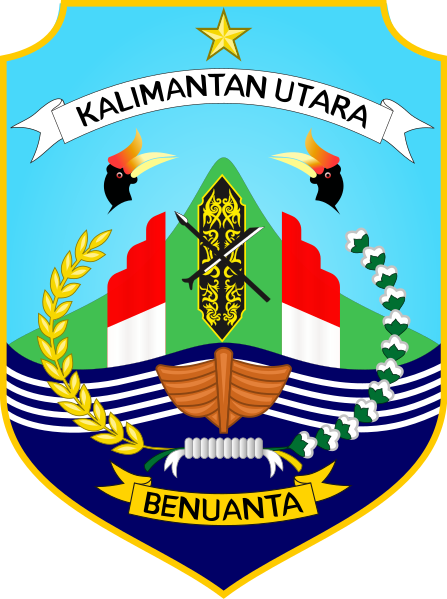 North Kalimantan or Kalimantan Utara (abbreviated Kaltara) is a province in Indonesia located in the northern part of the island of Borneo. The province is directly adjacent to neighboring Malaysia, namely the states of Sabah and Sarawak. The administrative center of North Kalimantan is currently located in Tanjung Selor City, along with the administrative center of Bulungan Regency.
North Kalimantan or Kalimantan Utara (abbreviated Kaltara) is a province in Indonesia located in the northern part of the island of Borneo. The province is directly adjacent to neighboring Malaysia, namely the states of Sabah and Sarawak. The administrative center of North Kalimantan is currently located in Tanjung Selor City, along with the administrative center of Bulungan Regency.
Currently, North Kalimantan is Indonesia’s youngest province which was officially ratified as a province in the plenary session of the DPR on October 25, 2012 based on Law Number 20 of 2012.
The Ministry of Home Affairs established 11 new autonomous regions consisting of one province and 10 regencies, including Kaltara on Monday, April 22, 2013. Together with the stipulation, Minister of Home Affairs Gamawan Fauzi inaugurated their respective regional heads, including the acting Governor of Kaltara, Irianto. Lambrie. North Kalimantan’s government infrastructure is still in the preparation process, which is planned to last a maximum of 1 year.
The process of dividing North Kalimantan into a separate province from East Kalimantan began in the 2000s. After going through a long process, the establishment of the province of North Kalimantan was finally approved in the plenary session of the DPR on October 25, 2012.
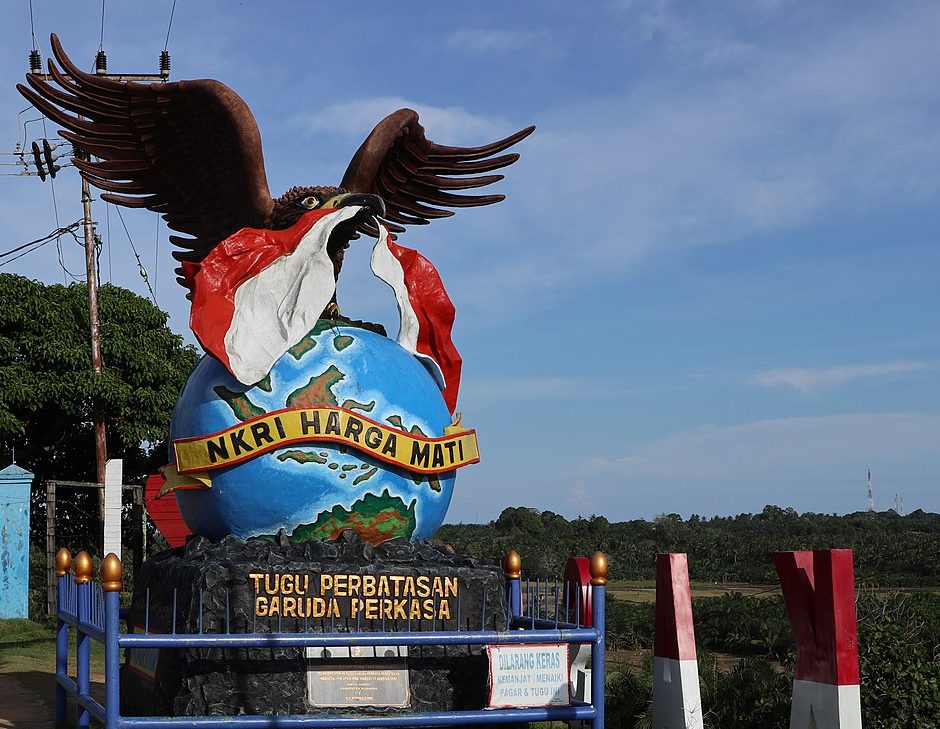 History
History
The province of Borneo during the early days of independence, 1945. Historically, the countries in the northern part of the island of Borneo, which include Sarawak, Sabah, Brunei. From the Hindu period until the time before the formation of the Bulungan Sultanate, the area that is now the province of North Kalimantan to the Kinabatangan area in eastern Sabah was the mandala area of the Berau state called Nagri Marancang.
However, recently the northern part of Nagri Marancang (aka Eastern Sabah) was separated from Berau because it was claimed as a Brunei mandala area, then by Brunei it was awarded to the Sultanate of Sulu and the Suluk Tribe began to live in some of the area. Then the British colonial controlled the north of Nagri Marancang and the Dutch controlled the south of Nagri Marancang (now the province of Kaltara).
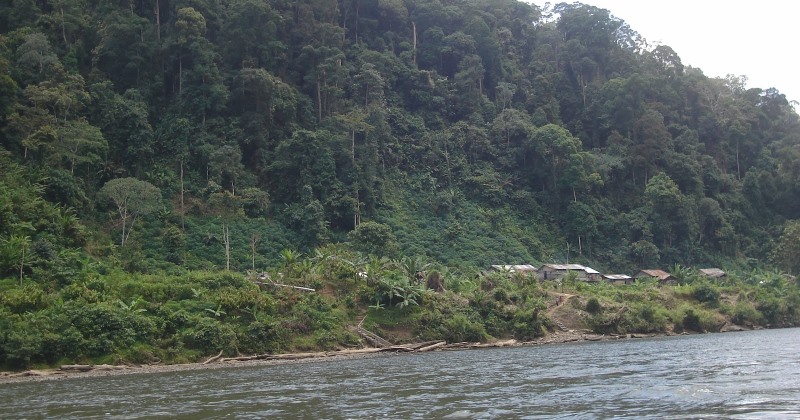 The area that became the province of North Kalimantan was the former territory of the Bulungan Sultanate. The Sultanate of Bulungan became an area of expansion of the influence of the Sultanate of Sulu. However, the Berau Kingdom (which is the mother of the Bulungan Sultanate) according to Hikayat Banjar is one of the vazals or states in the state mandala of the Banjar Sultanate since ancient times, when the Banjar Sultanate was still called the Kingdom of Negara Dipa (Hindu period).
The area that became the province of North Kalimantan was the former territory of the Bulungan Sultanate. The Sultanate of Bulungan became an area of expansion of the influence of the Sultanate of Sulu. However, the Berau Kingdom (which is the mother of the Bulungan Sultanate) according to Hikayat Banjar is one of the vazals or states in the state mandala of the Banjar Sultanate since ancient times, when the Banjar Sultanate was still called the Kingdom of Negara Dipa (Hindu period).
Until 1850, the country of Bulungan was still claimed as a vassal state in the state mandala of the Sulu Sultanate. However, in 1853, the country of Bulungan was included in the territory of the Dutch East Indies or became part of Berau again.[16] Although recently the country of Bulungan was under the rule of the Prince of Brunei, the country is still included in the mandala of the state of Berau.
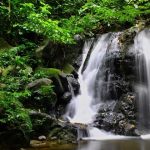
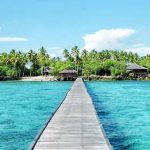
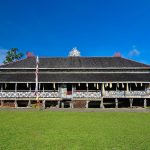
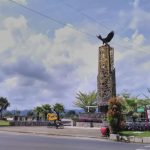
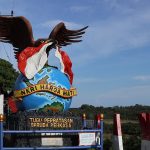
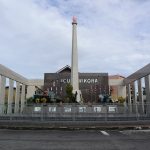
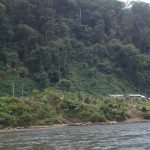













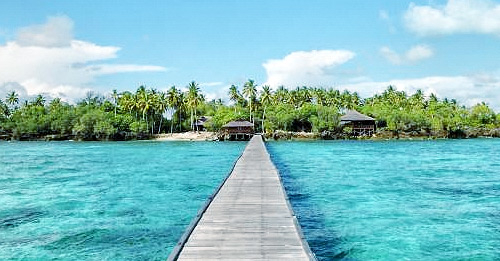 Based on the agreement between the Sultanate of Banjar and the Dutch VOC made on August 13, 1787 and May 4, 1826, legally the Sultanate of Banjar became a Dutch VOC protectorate area and several parts and states which were claimed as former vassals of Banjar were handed over as the property of the Dutch VOC. including Berau and its conquered areas, the Dutch Company made the boundaries of its territory which it obtained from Banjar based on the agreement, namely the westernmost region was the state of Sintang, the area of Lawai and the Jelai River Basin (one of the areas of the Kotawaringin Kepageranan within the sultanate of Banjar). while the easternmost region is the state of Berau.
Based on the agreement between the Sultanate of Banjar and the Dutch VOC made on August 13, 1787 and May 4, 1826, legally the Sultanate of Banjar became a Dutch VOC protectorate area and several parts and states which were claimed as former vassals of Banjar were handed over as the property of the Dutch VOC. including Berau and its conquered areas, the Dutch Company made the boundaries of its territory which it obtained from Banjar based on the agreement, namely the westernmost region was the state of Sintang, the area of Lawai and the Jelai River Basin (one of the areas of the Kotawaringin Kepageranan within the sultanate of Banjar). while the easternmost region is the state of Berau.
The state of Berau includes the sultanate of Gunung Tabur, the sultanate of Tanjung/Sambaliung, the sultanate of Bulungan & the Tidung district which was abolished in 1916. Based on a map of the Dutch East Indies in 1878 at that time, it showed the position of the border much further north than the present-day Kaltara-Sabah border, because it covered all the Tidung villages in the Tawau region.
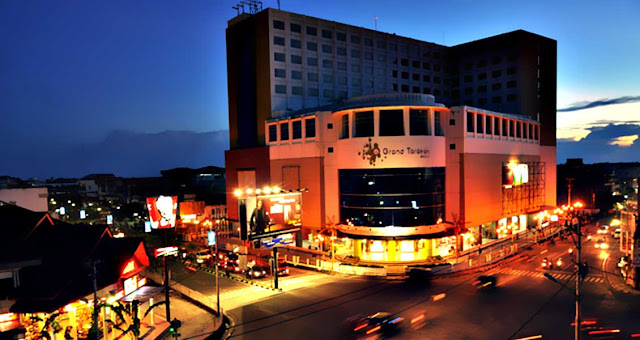 History of the Formation of Kaltara
History of the Formation of Kaltara
The North Kalimantan Governor’s Office is located in the city of Tanjung Selor. The process of dividing North Kalimantan into a separate province from East Kalimantan began in the 2000s. After going through a long process, the formation of the province of North Kalimantan was finally approved in the plenary session of the DPR on October 25, 2012.
Geographical
North Kalimantan Province has an area of ± 75,467.70 km², located at a position between 114º 35′ 22′ – 118º 03 00′ East Longitude and between 1º 21′ 36′ – 4º 24′ 55′ North Latitude. In addition, according to the provincial authority limits, North Kalimantan Province has an ocean area of 11,579 km² (13% of the total area).
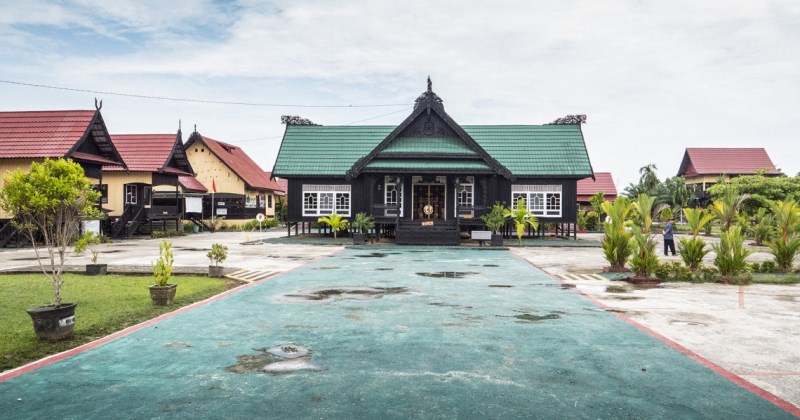 Traditional house
Traditional house
The culture of the Tidung Tribe as a native tribe of the province whose capital is Tanjung Selor has actually been developing for a long time. One of the cultural icons that can be proven is the Baloy traditional house which is now known as the traditional house of North Kalimantan.
Because the Tidung tribe is one of the Dayak sub-tribes, the design of the Baloy house which is the Tidung traditional house is also similar to the Lamin traditional house from East Kalimantan. Some experts even mention that the Baloy house is a house with the results of the development of the Lamin traditional house architecture.
Apart from being composed of several interior rooms, Baloy’s house is also equipped with several outbuildings that have social functions. At the back of the house, for example, there is a large pool in the middle of which there is a building called Lubung Kilong. This building is used as a stage for Tidung tribal arts performances, such as the Jepen Dance. Lubung Kilong is also equipped with a building for the audience to watch the show called Lubung Intamu. In addition to being used as a place to watch performances, this building also functions as a larger meeting place for indigenous people, for example in the inauguration of traditional stakeholders or customary deliberations.
 Traditional clothes
Traditional clothes
The Dayak tribe spread across the Kalimantan region consists of many sub-tribes. As for the majority Dayak tribe in North Kalimantan is the Kenyah Dayak tribe. This sub-tribe whose people are characterized as similar to those of Chinese descent have traditional clothes called Ta’a and Sapei Sapaq.
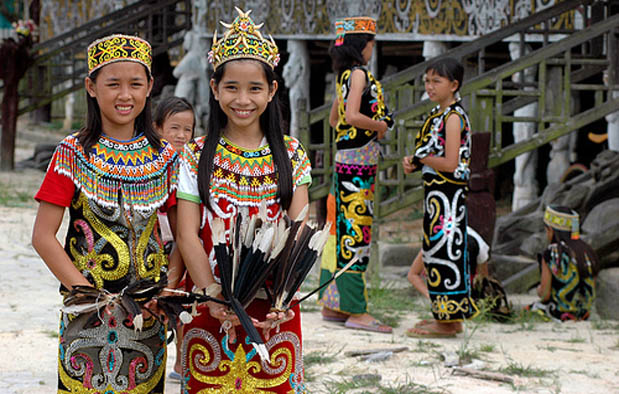 Ta’a clothes are traditional clothes that are specifically worn by Dayak women in Kalimantan. This outfit is made of black velvet with sewn knick-knacks or embellishments in the form of beads. Ta’a consists of a top with a model resembling a vest (without sleeves), a bottom in the form of a skirt with the same color and motif, as well as a head covering decorated with hornbill feathers, and other accessories such as bracelets, necklaces, and beads.
Ta’a clothes are traditional clothes that are specifically worn by Dayak women in Kalimantan. This outfit is made of black velvet with sewn knick-knacks or embellishments in the form of beads. Ta’a consists of a top with a model resembling a vest (without sleeves), a bottom in the form of a skirt with the same color and motif, as well as a head covering decorated with hornbill feathers, and other accessories such as bracelets, necklaces, and beads.
Sapei Sapaq clothes are traditional North Kalimantan clothes intended for men. From the material, the model and the motif, this shirt is very similar to Ta’a’s shirt. It’s just that, for subordinates, the clothes worn by men are only a roll of a scarf that looks like underwear. Even so, these kinds of subordinates are now generally replaced with black shorts because they are considered less pleasing to the eye. Complementary to Sapei Sapaq’s clothes are a saber tucked in at the waist, a war shield, and necklaces made of natural materials such as bones, pig tusks, and seeds.
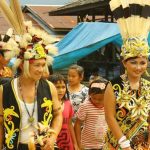

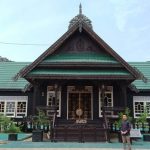
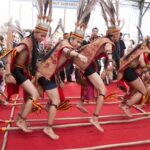

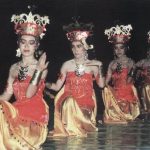












Traditional dances
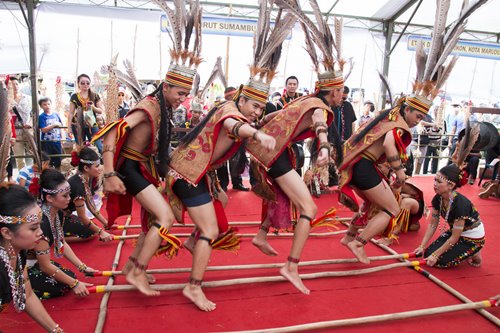 Magunatip Dance or Lalatip Dance is a traditional dance originating from the Tarakan and Malinau areas of North Kalimantan. In ancient times the magunatip dance was used as a leg dexterity exercise in jumping and avoiding obstacles. This was done because of the war between tribes. Then the dexterity training is now turned into a dance.
Magunatip Dance or Lalatip Dance is a traditional dance originating from the Tarakan and Malinau areas of North Kalimantan. In ancient times the magunatip dance was used as a leg dexterity exercise in jumping and avoiding obstacles. This was done because of the war between tribes. Then the dexterity training is now turned into a dance.
In the magunatip or Lalatip dance, which is a traditional dance of North Kalimantan, there are three groups of players, namely a group of leg braces using wooden sticks, a group of dancers while dancing while also avoiding wooden pins and a group of musical players with traditional North Kalimantan musical instruments in the form of gongs and drums. This dance is thrilling because the dancer can be pinched or squeezed by a wooden stick if the dancer is too late to escape, especially when the dancer is dancing with her eyes closed.
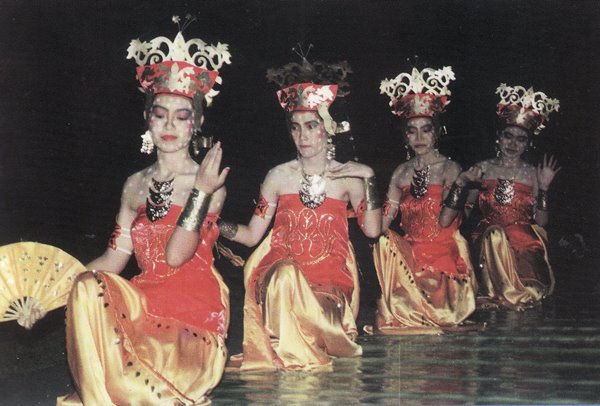 Jugit Dance is a traditional dance from Bulungan Regency, North Kalimantan, which is a dance that is only performed in the palace. Basically, this jugit dance is divided into two, namely Jugit Uncle and Jugit Demaring, both of which are sacred palace dances, although at first glance they seem to have similarities, but actually the two dances have very complex differences in terms of musical instruments and song lyrics, colors of clothes and fabrics used. used, hand movements when holding fans and scarves, as well as what and for whom the dance is presented.
Jugit Dance is a traditional dance from Bulungan Regency, North Kalimantan, which is a dance that is only performed in the palace. Basically, this jugit dance is divided into two, namely Jugit Uncle and Jugit Demaring, both of which are sacred palace dances, although at first glance they seem to have similarities, but actually the two dances have very complex differences in terms of musical instruments and song lyrics, colors of clothes and fabrics used. used, hand movements when holding fans and scarves, as well as what and for whom the dance is presented.
In the past, this dance was so sacred, the Jugit Uncle dance could only be served to the Sultan and pulled inside the palace, while the Jugit Demaring dance could be witnessed by ordinary people and could be performed outside the palace.
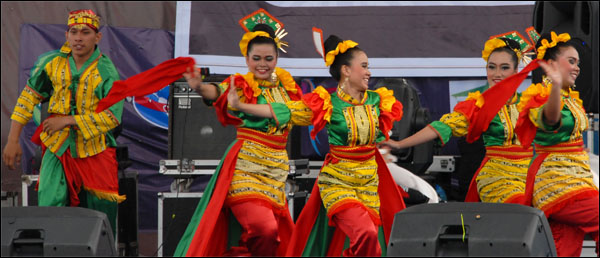 According to legend, this jugit dance was created by two artists as well as admirals of the Bulungan sultanate, namely Datuk Maulana and Datuk Mahubut. So you can imagine the age of this dance is so old, it could be around the second half of the 18th century AD this dance has found its form as it is known today.
According to legend, this jugit dance was created by two artists as well as admirals of the Bulungan sultanate, namely Datuk Maulana and Datuk Mahubut. So you can imagine the age of this dance is so old, it could be around the second half of the 18th century AD this dance has found its form as it is known today.
Jepen Dance is a traditional dance of the Dayak tribe in general, one of which is in North Kalimantan. Jepen dance is a dance with Islamic nuances accompanied by music such as tambourine music. The clothes he wears are green and yellow. The number of dancers in this dance is two or more pairs (female and male).
This dance is dominated by footwork. In neighboring countries, Jepen dance is also famous there such as the Philippines, Brunei Darussalam and Malaysia. Jepen dance is almost the same as dances in coastal areas such as Riau, with a different name, namely Zapin or Japin dance.
Kabupaten & Kota

Bulungan

Malinau

Nunukan

Tana Tidung

Tarakan

Bulungan

Malinau

Nunukan

Tana Tidung

Tarakan

Bulungan

Malinau

Nunukan

Tana Tidung

Tarakan
Culinary
Just like other regions in Indonesia, North Kalimantan is also rich in culture and rich in cuisine. One of the famous North Kalimantan specialties is Lawa. Lawa is the most famous traditional food of North Kalimantan. This food is loved by almost all the people of the area.
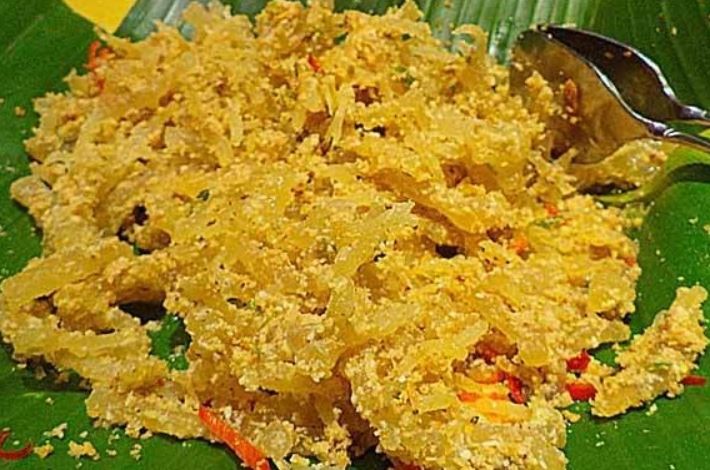 Lawa comes from the Bulungan kingdom, one of the kingdoms in the North Kalimantan area. The basic ingredients used to make dishes are vegetables such as cucumber or seaweed seasoned with roasted coconut and giant prawns or shellfish.
This one dish is the right opening menu before trying other Kalut cuisine. This food is not only delicious but also useful for reducing cholesterol and high blood pressure.
Lawa comes from the Bulungan kingdom, one of the kingdoms in the North Kalimantan area. The basic ingredients used to make dishes are vegetables such as cucumber or seaweed seasoned with roasted coconut and giant prawns or shellfish.
This one dish is the right opening menu before trying other Kalut cuisine. This food is not only delicious but also useful for reducing cholesterol and high blood pressure.
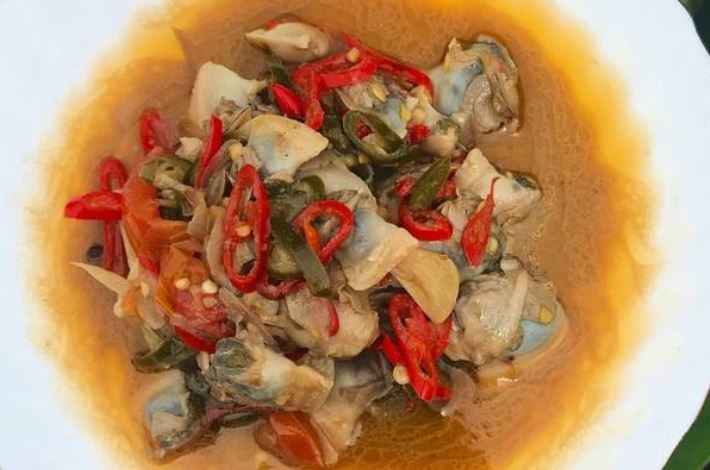 Tumis Kapah, this menu is a favorite menu in the city of Tarakan. The basic material used is one of the many types of shellfish found in the city.
Besides being delicious, Tumis kapah also contains a lot of protein. In serving, the scallops are stir-fried with spices such as garlic and shallots.
Tumis Kapah, this menu is a favorite menu in the city of Tarakan. The basic material used is one of the many types of shellfish found in the city.
Besides being delicious, Tumis kapah also contains a lot of protein. In serving, the scallops are stir-fried with spices such as garlic and shallots.
Kepiting Soka, If you are a fan of crab-based culinary delights, it seems that you must come to North Kalimantan to try a special dish, namely Kepiting Soka, crab soka. Soka crabs are usually cooked in stir-fried sauce. This dish can easily be found in the city of Tarakan. Uniquely, this soka crab is consumed with a soft skin condition because the crab has just shed its skin. Because it is soft and tender the shell can be consumed directly without peeling it like when eating crabs in general. Due to the soft shell, the spices easily seep into the meat, making it taste even more delicious.
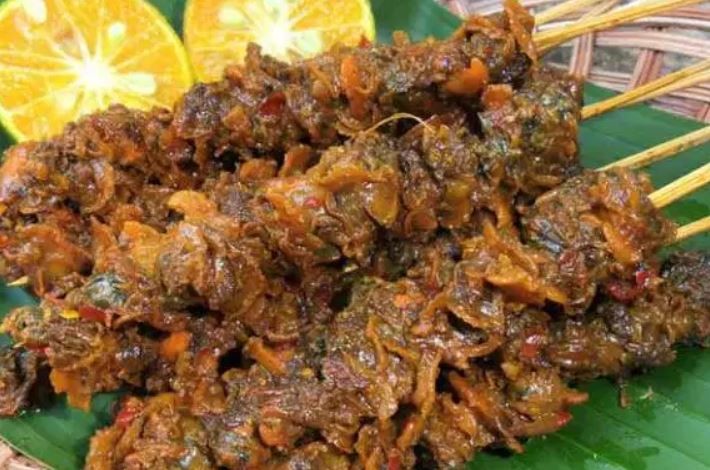 Sate Temburung. If you want to enjoy satay other than chicken satay or goat satay, you can taste this one culinary.
Temburung is a type of sea animal that is similar to a shell. The difference is, the trumpet has a circular shell shape like a trumpet.
By the local community, Temburung satay is often served as a dish at New Year’s Eve events.
Sate Temburung. If you want to enjoy satay other than chicken satay or goat satay, you can taste this one culinary.
Temburung is a type of sea animal that is similar to a shell. The difference is, the trumpet has a circular shell shape like a trumpet.
By the local community, Temburung satay is often served as a dish at New Year’s Eve events.
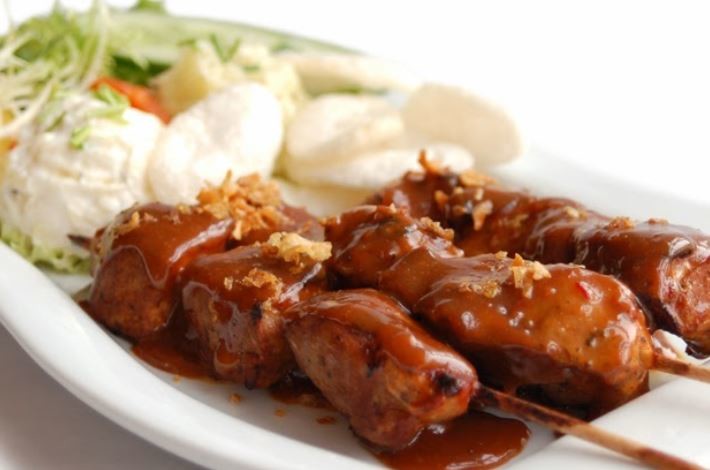 Satai Ikan Pari, yess.. stingray satay. North Kalimantan is indeed a seafood paradise, so it’s no wonder that almost all traditional dishes are made from various types of marine animals.
In the province, there is the Sesayap river which is the main river in the northern part of East Kalimantan.
Satai Ikan Pari, yess.. stingray satay. North Kalimantan is indeed a seafood paradise, so it’s no wonder that almost all traditional dishes are made from various types of marine animals.
In the province, there is the Sesayap river which is the main river in the northern part of East Kalimantan.
In the river there are many stingrays which are the basic ingredients for making satay dishes. How to make easy stingray satay. After being cleaned beforehand, the stingray is separated between the skin and the flesh. Then the meat is cut into cubes and soaked in lime to remove the fishy smell. Next, the satay is seasoned with spices and grilled like regular satay. This delicious satay is often the target of tourists visiting the area.
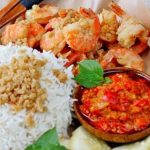

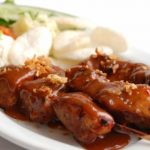

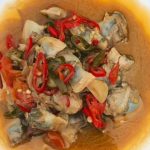
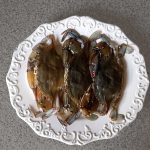
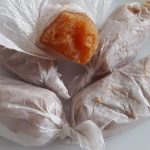
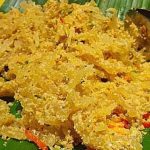
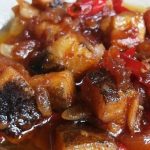
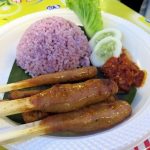












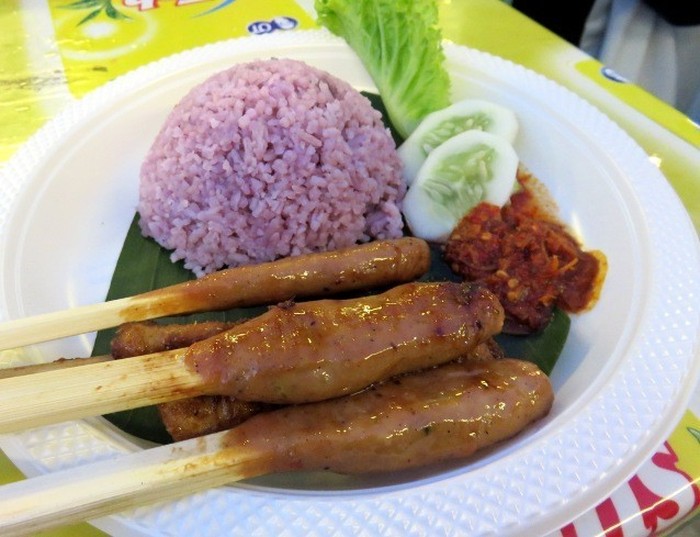 The next culinary specialty from North Kalimantan is subut rice. This rice is different from rice in general, which is not white but purple. This food can be found in the Tana Tidung Regency area, because this food is a traditional food originating from the area.
The next culinary specialty from North Kalimantan is subut rice. This rice is different from rice in general, which is not white but purple. This food can be found in the Tana Tidung Regency area, because this food is a traditional food originating from the area.
This food is made from corn, rice and purple sweet potato. The way to cook it is, first the rice is cooked until cooked, then the sweet potato is cut into cubes and then boiled together with the corn. After everything is cooked, everything is mixed and given salt and seasoning to produce a good taste.
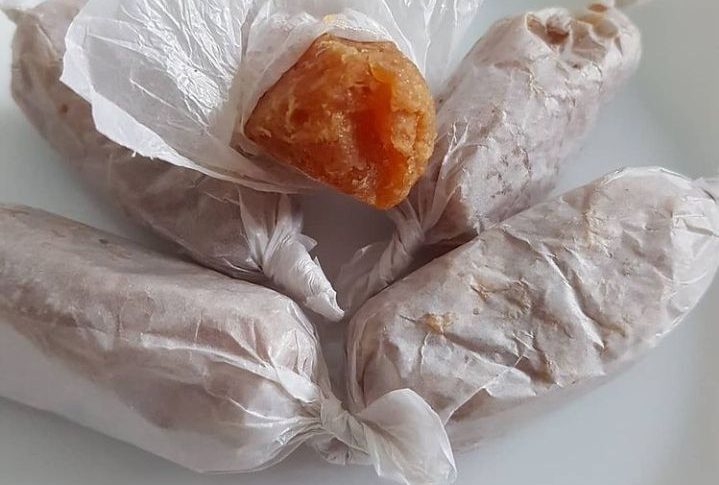 In addition to seafood which is synonymous with spicy, soupy and so on, this time there is a typical North Kalimantan culinary that is synonymous with sweet taste, which is usually made as souvenirs, namely dodol cempedak and seaweed.
In addition to seafood which is synonymous with spicy, soupy and so on, this time there is a typical North Kalimantan culinary that is synonymous with sweet taste, which is usually made as souvenirs, namely dodol cempedak and seaweed.
In the local area, this lunkhead is commonly referred to as lempok. It is usually used as a snack and has a sweet taste. Cempedak dodol is made from the basic ingredients of cempedak fruit which belongs to the family of jackfruit and durian. This fruit is very sweet like jackfruit, and has a durian-like aroma. Apart from cempedak lunkhead, there is also lunkhead made from seaweed. Intrigued by the taste, then you should try it. This seaweed dodol is very healthy, so it is suitable for those of you who are on a diet but still consume snacks and don’t need to be afraid because this food is healthy and will not cause weight gain.tourists visiting the area.
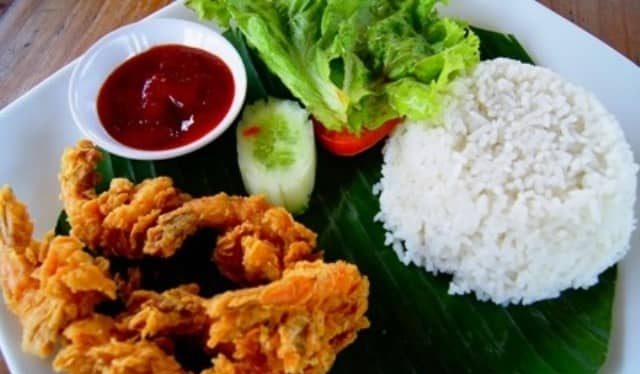 Again, seafood cuisine, indeed North Kalimantan is inseparable from seafood, including shrimp. One of the typical foods made from shrimp is the shrimp rice. This shrimp rice is a food that comes from one of the areas of North Kalimantan, namely Malinau district.
Again, seafood cuisine, indeed North Kalimantan is inseparable from seafood, including shrimp. One of the typical foods made from shrimp is the shrimp rice. This shrimp rice is a food that comes from one of the areas of North Kalimantan, namely Malinau district.
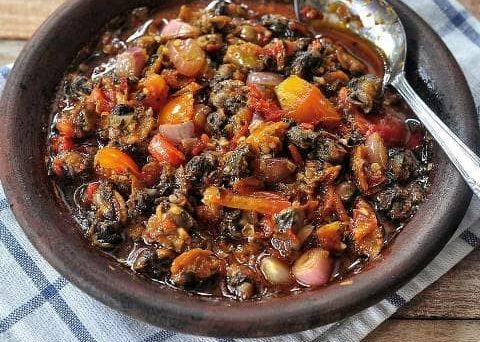 This area is traversed by a well-maintained river so a lot of shrimp are found here, so it’s not wrong if shrimp rice is a specialty of Malinau district.
The way to serve it is very simple, namely fried shrimp, then complete with fluffier rice plus spicy chili sauce. It tastes good and delicious, it’s a loss if you don’t try this one food when you go to North Kalimantan.
This area is traversed by a well-maintained river so a lot of shrimp are found here, so it’s not wrong if shrimp rice is a specialty of Malinau district.
The way to serve it is very simple, namely fried shrimp, then complete with fluffier rice plus spicy chili sauce. It tastes good and delicious, it’s a loss if you don’t try this one food when you go to North Kalimantan.
Tudai is a kind of shell like a kapah, and this is also commonly found in North Kalimantan, precisely in Tanjung Selor. This tudai has thick flesh and has a black and orange shell. To get these shells, you just have to visit the Bulungan area. Because in this place a lot of tudai. How to cook this tudai is quite simple, which is just boiled or served with fried chili sauce. This cuisine is usually available at certain events, such as weddings and so on, but you can also find it in several restaurants in the Tanjung Selor area.
